You might think neck exercises are just for athletes who put their neck in danger—football players, martial artists, and so on.
But they offer much more than just injury prevention.
Training your neck can also enhance your everyday life by reducing aches and pains (now and in the future) and making you look more powerful and confident.
Better yet, it isn’t dangerous, and it doesn’t require any complicated training contraptions or fancy methods.
All you need are the right exercises for neck strengthening, a simple plan, and the determination to stay consistent.
That’s exactly what you’ll get in this article—everything you need to build a stronger, thicker neck.
Neck Anatomy
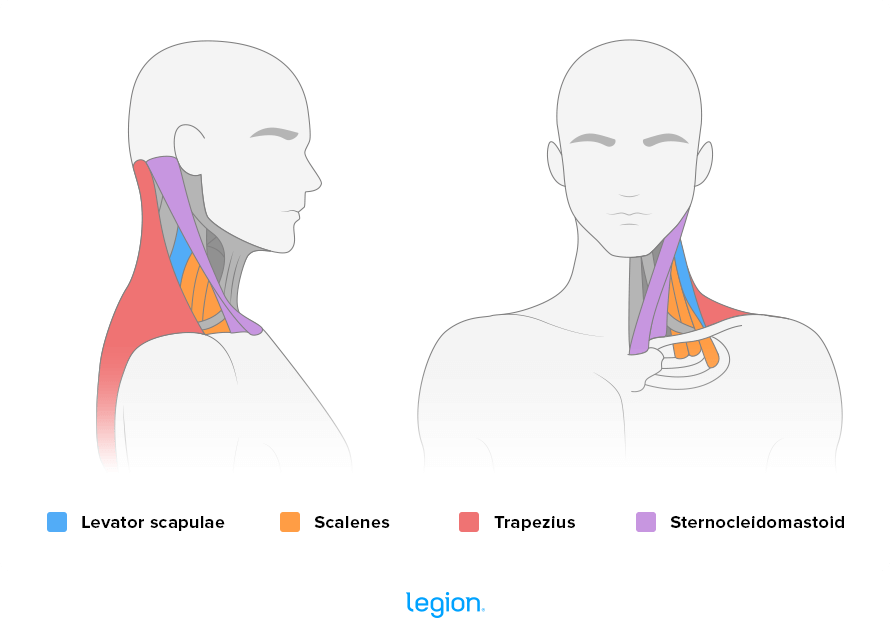
The neck, or cervical spine (if we’re talking about the skeleton only), comprises a complex network of muscles, ligaments, and bones. Here’s how its primary muscles function:
- Sternocleidomastoid (SCM): This neck muscle aids in bending your neck to the side, head rotation, and bringing the chin to the chest.
- Scalene: These neck muscles on each side of your neck mainly help you breathe.
- Levator scapulae: These neck muscles help you lift your shoulder blades and bend your neck to the side.
- Trapezius: These neck muscles help you bend your head to the side, look up, and turn your head to look over your shoulder.
Neck Exercises: Benefits
Prevents Injuries and Concussions
Neck strengthening exercises are vital for preventing injuries and concussions, especially in sports such as football, rugby, or MMA.
In one study, researchers found that every one-pound increase in neck strength reduces concussion risk by 5%.
Relieves Neck Pain.
Neck exercises may relieve neck pain resulting from sitting for long periods. They may also mitigate tension-type headaches
Increases Attractiveness
A thick neck and shoulders may help you appear more “brawny,” which is a characteristic many women find attractive. There isn’t much data on how this affects women’s attractiveness, though.
The Best 5 Neck Strengthening Exercises for a Wide, Thick Neck
These are the best neck exercises for strengthening your neck and upper back. While performing isolation exercises for your neck, wear a beanie or place a folded towel on your head for added comfort.
1. Deadlift
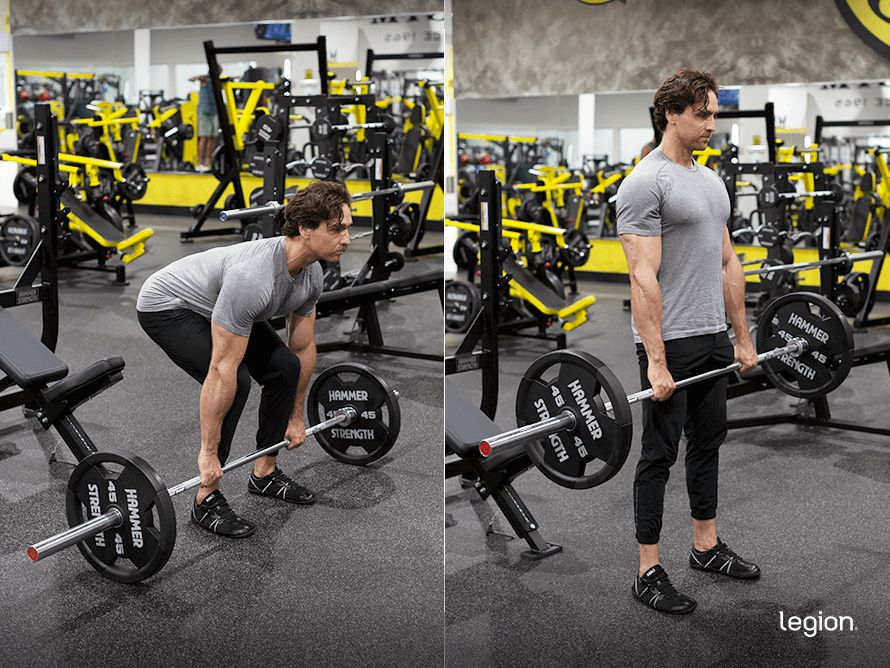
Position your midfoot under a loaded barbell slightly narrower than shoulder-width apart and point your toes slightly out. Take a deep breath, then move toward the bar by pushing your hips back. Grip the bar just outside your shins and keep your head in a neutral position.
Push through your heels to drive your body upward and slightly back. As the bar rises above your knees, push your hips into the bar. Reverse the movement and return to the starting position.
Perform the deadlift at the beginning of your workouts for 3 sets of 4-to-6 reps, resting 3-to-5 minutes between sets.
2. Neck Flexion
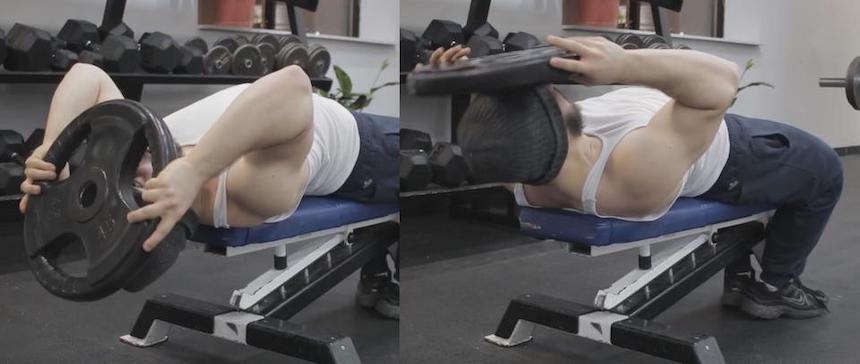
Lie supine on a bench with your head hanging off the end and your feet planted on the floor. Place a weight plate on your forehead and hold it in position with both hands. Tilt your head upwards until your chin meets your chest, then extend your neck backward until you feel a stretch in the front of your neck.
Do 3 sets of 20-to-25 reps, resting 2-to-3 minutes between sets.
3. Neck Extension
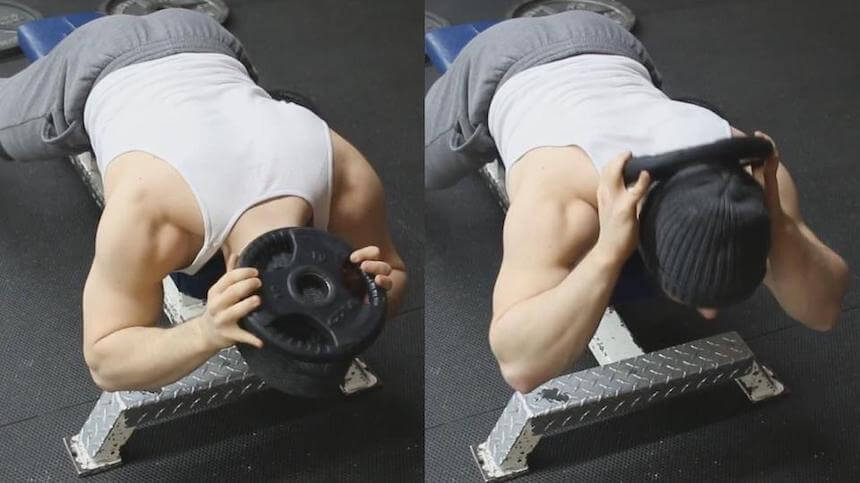
Lie prone on a bench with your head hanging off the end and your feet on the floor. Position a weight plate on the back of your head and hold it in position with both hands.
Lift your head as high as you comfortably can, then return to the start. Continue extending until you feel your neck stretching down the back.
4. Neck Side Raise

Lie on a bench so that your right lat is on the pad and your body is perpendicular to the bench. Hug the bench with your right arm and place a weight plate on the left side of your head, holding it in position with your left hand.
Lift your left ear toward your left shoulder (make sure you’re only moving your head toward your shoulder—no neck rotation or chin tucking), then return to the starting position. Repeat 10 times on the left side, before repeating on the right.
Do 3 sets of 10 reps on each side, resting 60-to-90 seconds between sets.
5. Neck Bridge
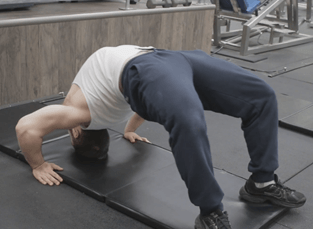
Lie on your back with your knees bent and feet flat on the floor. Place your palms on the floor on either side of your head so your fingers point toward your feet. Tilt your head backward until the top of your head is resting on the floor, then press through your feet and hands to lift your body off the floor, forming a bridge. Hold the bridge for a 10-to-60 seconds, then return to the starting position.
If you find getting into the correct position challenging, practice getting in and out of the bridge several times a day until you develop the required strength, flexibility, and coordination.
Once you’re comfortable with the form, do 3 sets of 10-to-60 seconds each, resting 60-to-90 seconds between sets.
FAQ #1: Does testosterone build a thicker neck?
Testosterone promotes muscle growth, so taking testosterone would likely make your neck thicker, especially if you also did neck strengthening exercises.
That said, you don’t need to “hop on T” to build a thicker neck. Training it regularly with the exercises above, getting progressively stronger over time, and eating enough calories and protein should do the trick.
FAQ #2: How do you build a thicker neck?
Building a thicker neck mostly comes down to doing effective exercises for your neck, getting stronger over time, staying consistent with neck training, and eating in a way that drives muscle growth.
Follow the advice in this article for the first two, and check out this article to learn how to optimize your diet:
FAQ #3: When can I expect to see results from neck strengthening exercises?
Because most people have underdeveloped neck muscles, they tend to find their neck responds quickly to training. That is, most people experience a “newbie gains” period just for their neck when they start training it consistently.
As such, most people notice improvements in neck thickness after 8-to-10 weeks of training and even more significant growth after 6 months of consistent work.
Scientific References +
- Eckner, James T., et al. “Effect of Neck Muscle Strength and Anticipatory Cervical Muscle Activation on the Kinematic Response of the Head to Impulsive Loads.” The American Journal of Sports Medicine, vol. 42, no. 3, 31 Jan. 2014, pp. 566–576, https://doi.org/10.1177/0363546513517869. Accessed 12 Feb. 2020.
- Geary, Kevin, et al. “Effects of Neck Strength Training on Isometric Neck Strength in Rugby Union Players.” Clinical Journal of Sport Medicine, vol. 24, no. 6, Nov. 2014, pp. 502–508, https://doi.org/10.1097/jsm.0000000000000071. Accessed 16 Apr. 2019.
- Collins, Christy L., et al. “Neck Strength: A Protective Factor Reducing Risk for Concussion in High School Sports.” The Journal of Primary Prevention, vol. 35, no. 5, 15 June 2014, pp. 309–319, link.springer.com/article/10.1007/s10935-014-0355-2, https://doi.org/10.1007/s10935-014-0355-2.
- Andersen, Lars L., et al. “Effect of Two Contrasting Types of Physical Exercise on Chronic Neck Muscle Pain.” Arthritis & Rheumatism, vol. 59, no. 1, 2007, pp. 84–91, https://doi.org/10.1002/art.23256. Accessed 8 Feb. 2021.
- Madsen, Bjarne K, et al. “Neck and Shoulder Muscle Strength in Patients with Tension-Type Headache: A Case-Control Study.” Cephalalgia, vol. 36, no. 1, 1 Apr. 2015, pp. 29–36, https://doi.org/10.1177/0333102415576726.
- Frederick, David A., and Martie G. Haselton. “Why Is Muscularity Sexy? Tests of the Fitness Indicator Hypothesis.” Personality and Social Psychology Bulletin, vol. 33, no. 8, 15 June 2007, pp. 1167–1183, https://doi.org/10.1177/0146167207303022.










